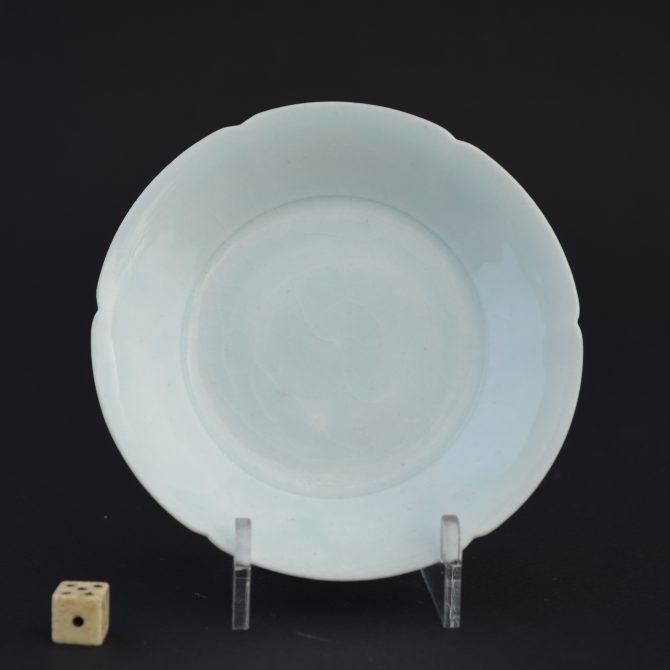
A Fine Northern Song Qingbai Flower Shaped Dish c.11th or 12th Century
A fine Song Dynasty Qingbai porcelain dish, probably from a kiln at Jingdezhen c.11th or 12th century. Finely potted, the flower shaped form has a notched rim. The back has delicately incised lines from each of the rim notches to indicate individual petals. The glaze is especially clear and has the white of the porcelain clearly visible as it is thinly glazed as well as thinly potted.
SOLD
- Condition
- In perfect condition.
- Size
- Diameter : 9 cm (3 1/2 inches)
- Provenance
- Capital Gallery Hong Kong, 9th of June 2001. From the collection of early Chinese ceramics belonging to Professor Gordon Michael Besser FRCP FMedSci (born 22 January 1936) is a British medical doctor. He is emeritus Professor of Medicine at St Bartholomew's Hospital, London, and an expert of endocrinology and diabetes.
- Stock number
- 24547
Information
Qingbai Ware :
The earliest known qingbai wares were produced in Jingdezhen in Jiangxi province around the late 10th century and are characterized by faint pale-blue glazes on low, wide forms. Qingbai continued to be enormously popular and highly produced throughout the Song dynasty (960-1279) and was prevalent in the Yuan dynasty (1279-1368), but slackened during the Ming dynasty (1368-1644) until being replaced by tianbai, ‘sweet white’ ware. The initial forms of qingbai were simple bowls and dishes, but by the mid-Northern Song the forms had advanced to include a wide variety of objects used for daily life such as ewers, boxes, incense burners, granary models, vases, jars, sculptures, cups, cupstands, water droppers, lamps, grave wares, and tools for writing and painting. The precedent for the majority of these forms is found in earlier metalwork and lacquer and Rawson has suggested that the imitation of silver was the primary force behind the production of white wares, including qingbai.

